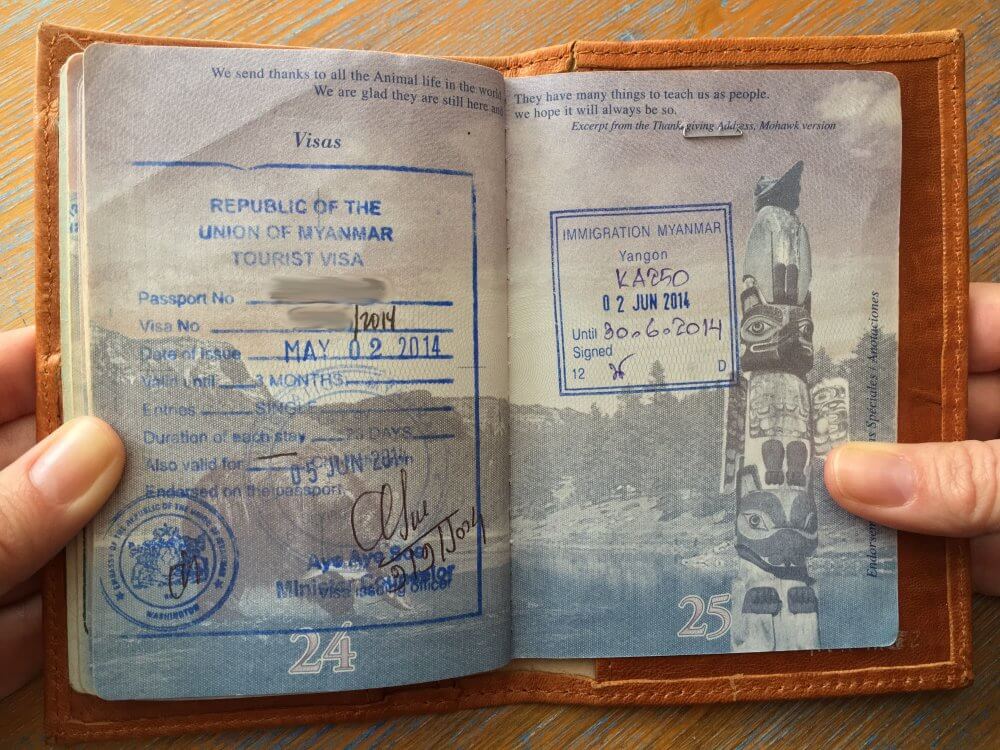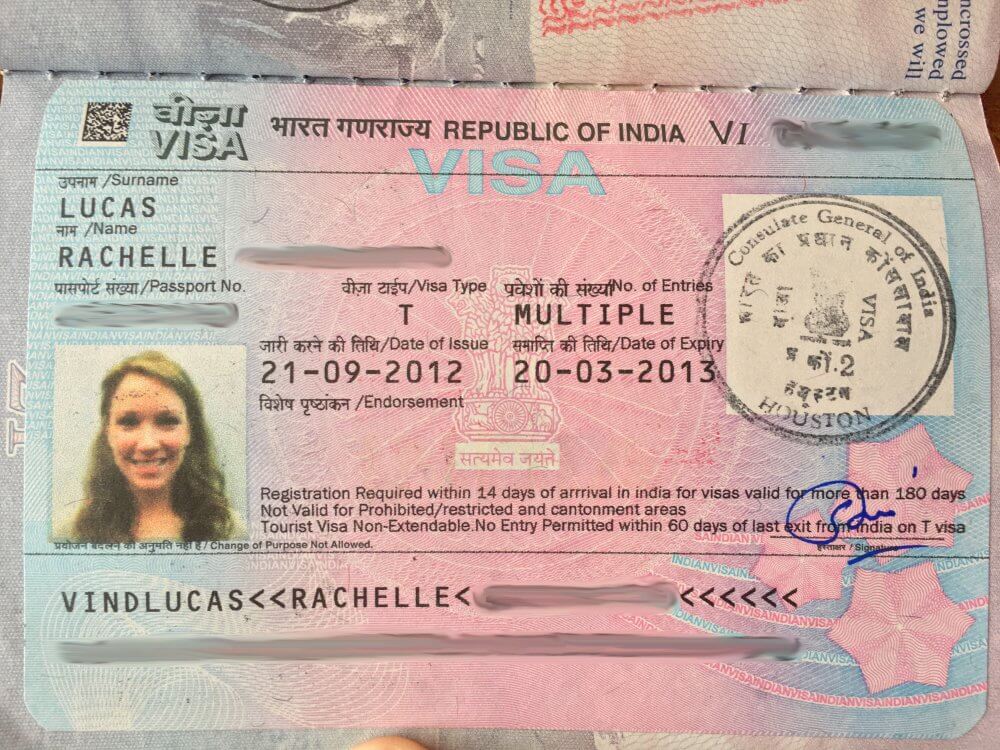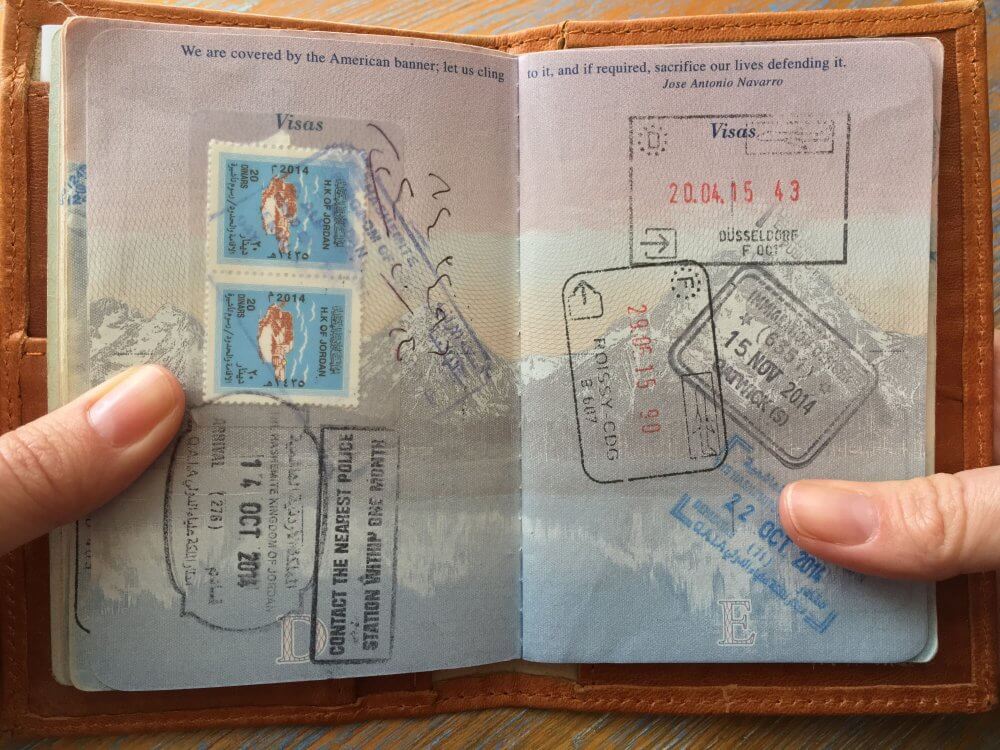Why do I need a visa if I have a passport? What is the difference between the two? Does a visa requirement mean I can’t travel?
I’ve been receiving these questions frequently via email and private message based on the recent news of E.U. lawmakers ending visa-free travel for U.S. travelers. I know this sounds scary, but it really is not a big deal for travelers wanting to visit Europe. Overall, it might add a bit of inconvenience, but I wouldn’t let it stop you from traveling. The worst it might do is require you to pay an extra fee and get an extra stamp or sticker in your passport.
As a U.S. Citizen, I’ve only ever had to get a visa a handful of times, traveling to Myanmar, Indonesia, Jordan, and India. So, no doubt, having to get a visa to travel to Europe is a bit unusual.
Each of my experiences obtaining a visa was completely different. But before I tell you about those experiences, let’s distinguish the difference between a passport and a visa, and why you might soon need both to travel to Europe.

Visa-on-arrival stamp for entry for Myanmar.
PASSPORTS
A passport verifies your identity and citizenship. This is why you need your birth certificate to apply for one. It is an official government document (in the United States, it is issued by the State Department) and shows that you are under your country’s protection. (This is why you might have heard of the State Department stepping in to help travelers that have found themselves in trouble with the law while abroad.) Most of the time, a passport is all you need to prove your citizenship, get your entry stamp at customs, and then enjoy a lovely vacation.

Mail-away visa obtained for travel to India.
VISAS
A visa is required when you need special permission to enter a country for a specific purpose. For instance, in the case of asking permission for an extended stay to work or study abroad. Depending on the country, you might need a visa for tourism too. A visa is in addition to your passport, and is typically added to one of your passport pages in the form of a special stamp or sticker. Sometimes you have to apply ahead of time and send your passport in to the nearest embassy or consulate office along with an application. Other times, as is the case for most tourism visas, you can typically aquire them at the airport when you arrive.

The country of Jordan’s visa-on-arrival stamp, similar to a postage stamp.
HOW TO GET A VISA
Visa requirements are different per country depending on your citizenship. There’s a reference list on Wikipedia that has a spreadsheet of visa requirements for U.S. citizens if you want to take a quick glance, but always check the Department of State to see if you need to obtain a visa for your travels as I found the spreadsheet not completely up-to-date. It is fun to scroll through to satisfy your curiosity, though.
Whether the visa is required ahead of time through an application, or is done at the airport on arrival, they typically need more information than your passport is able to provide. They might request the address of the hotel where you’re staying, your purpose for travel, and vaccination information, just to name a few. This is what I had to do before traveling to India and Indonesia. The process felt a little like a job application, but overall did not deter me from traveling.
When I traveled to Myanmar and Jordan, the process was a tourism visa-on-arrival that I obtained in the airport after landing. So, after going through customs, there was a second line I had to go to in order to answer a few questions, pay a fee, and get an additional stamp. Again, they’ll typically ask for the information and address for where you’ll be staying as well as a copy of your return plane ticket or itinerary.
If it sounds a bit overwhelming, most tour companies and travel agents will assist you with this process and take care of obtaining the visa for you. There’s also Travel Document Systems, a company that specializes in expediting the visa process if you need to apply for more than one visa for your trip.
TIP: Due to heightened security, most countries are requesting to see your return flight itinerary when going through customs even when no visa is required for entry. Though most of these flight documents are now digitally stored on your phone through apps, I still recommend printing a paper copy of your entire flight itinerary for backup.

Indonesia’s visa obtained via application through embassy, for travel to Bali.
So why is Europe requiring a VISA?
Most travelers can move freely throughout Europe without a visa due to the Schengen Agreement. This essentially made Europe borderless when it came to driving between countries, but you would still go through regular customs when arriving by flight (check out the Schengen Area and Schengen FAQ for more about the agreement’s history and how it works).
There are five new countries to the E.U. (Croatia, Romania, Bulgaria, Cyprus, and Poland) that were under consideration to be added to the Schengen Agreement, and the U.S. denied the visa-waver program for those five countries. So, (in my opinion) the EU’s vote is more about reciprocity than anything.
Currently, you can still travel to Europe without a visa, and it will take some time for them to organize the tourism visa process after this vote. If you’re planning a trip to Europe this year, I don’t think this new decision will immediately effect you, but do check the Deptartment of State website for the most up-to-date information about travel advisories and visa requirements.

Leave a Reply